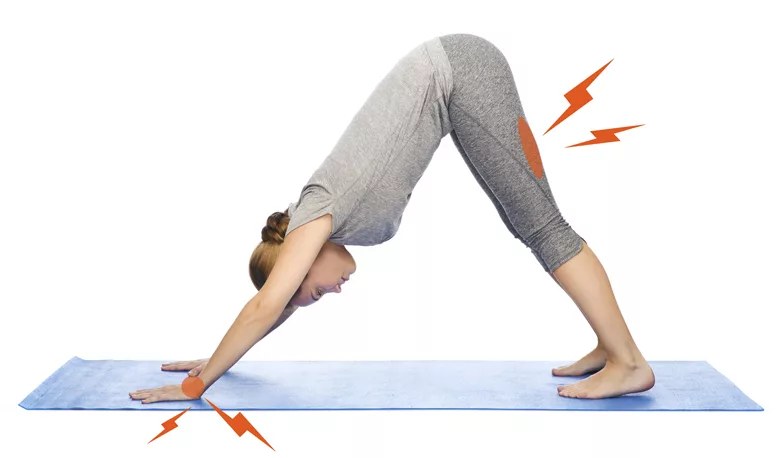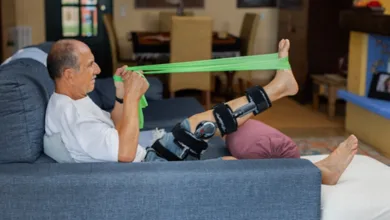How to Prevent Yoga Pain and Injuries

Yoga continues to be popular as more and more practicing adults report improved physical fitness, reduced stress, decreased pain, and reduced anxiety and depression. But is yoga safe?
The answer is yes, with the caveat that we follow a basic yoga precept known as ahimsa (uh-him-suh), a beautiful Sanskrit word meaning “do no harm.” We strive for ahimsa in our relations with others, but also in our relationship with our bodies.
Here are some ways to practice ahimsa in class and avoid injuries or pain:
Know and Accept Your Body
As with any exercise program, consult with your medical caregiver about anything you should avoid in a yoga class. Even if you are cleared by your physician, be honest with yourself about conditions that may affect your yoga practice — injuries, surgeries, medical conditions, or the unique ways your body is built; communicate these to your teacher before class.
Avoid, “But I Used to Be Able to Do That!”
A survey of more than 1300 yoga teachers worldwide asked them to rate factors causing yoga injuries. The highest rating was ego! Excess effort came in second, while factors such as osteoporosis, advanced age and being overweight received lower ratings as factors causing yoga injuries. Remember that yoga is totally non-competitive. If you compare yourself with others or push through pain because you “used to be able” to do the posture easily, you not only rob yourself of serenity but risk harm to your body.
Ask for Help
Yoga teachers are trained to offer modifications or alternate poses for your limitations. Do not be afraid to ask for these before or during class, especially if you are concerned about exacerbating certain conditions. For example:
- For wrist pain, your teacher may substitute the dolphin pose for a downward dog, or a forearm-bearing side plank instead of a wrist-bearing one.
- For tight, painful hamstrings, you may be advised to bend your knees for forward bends.
- To protect against osteoporosis-related spinal fractures, your teacher can help you modify forward bends.
- For tight and painful joints or tissues, yoga props such as blocks or bolsters may be offered to help you ease into poses.
Take A Break
If you are concerned you are over-doing it in class, it is always acceptable to come into child’s pose or your favorite resting pose to take some deep breaths.
So enjoy the benefits of yoga, but commit to doing no harm. Walk into the class repeating to yourself: Ahimsa. Ahimsa. The sound is beautiful. Practicing it honors and protects you.





